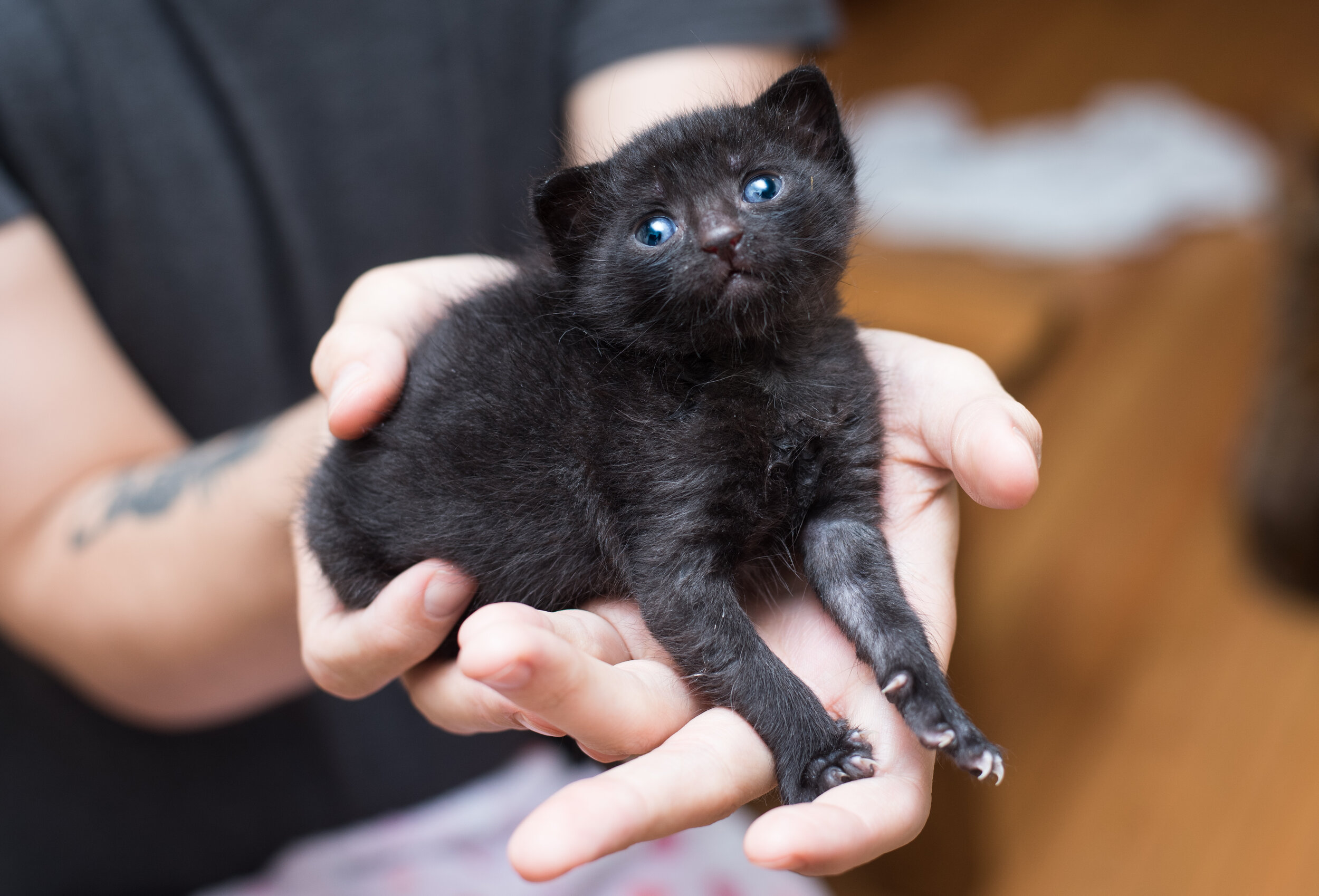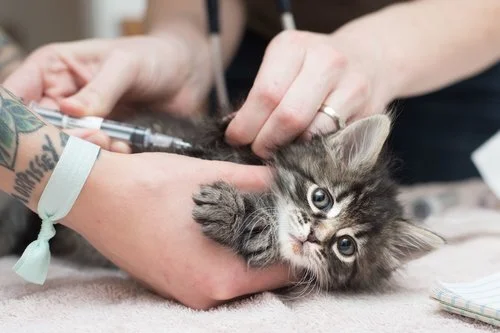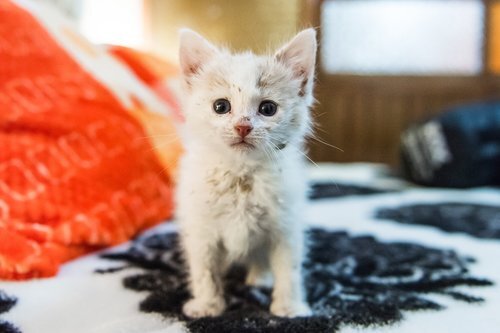Fleas
Fleas are small parasitic bugs that seek and consume the blood of a host animal, such as a kitten. An infestation of fleas can cause severe itching, discomfort, tapeworms—and even a loss of blood that can lead to deadly anemia. Kittens are especially susceptible to dying of flea anemia due to their small size; for this reason, flea infestations should be taken seriously and treatment should not be delayed.
Check for Fleas
Every foster parent should have a flea comb.
Check the kitten for fleas by combing through the fur with your fingers or with a flea comb. You may see active, live fleas which will appear as fast-moving, small, dark brown bugs that quickly dart through the fur, seeking refuge in the cat's face, belly, and armpits.
Even if you don’t see live bugs, check for flea dirt—the waste (poop!) left behind by fleas will tell you that they are there. Flea dirt looks like small black flecks of dirt, and will be present along the base of the fur, especially along the back and base of the tail. You can confirm that the specks are flea dirt by tapping them onto a paper towel and wetting them; if they begin to seep red, that’s because it is flea waste and contains digested blood. Ick!
If fleas or flea dirt are present, you’ll want to rid the kitten of fleas right away.
Learn to Give a Kitten a Flea Bath in This Video!
Many Chemical Treatments are Unsafe
While adult cats can be treated for fleas using a variety of prescription or over-the-counter medications, it’s important to know that many chemical flea treatments are unsafe for neonatal kittens due to their size and development. In most cases, it is not advised to use a chemical flea treatment on a kitten under 8 weeks of age. Please do not use any topical flea treatment for cats, flea spray, or flea collar on neonatal kittens unless advised to do so by a veterinarian. Never use a flea & tick treatment for dogs, as they can be deadly for cats of any age.
Note that providing one drop of Revolution for Kittens Under 5 Pounds can be safely done for neonatal kittens. This is a prescription drug only available through your veterinarian.
In every case, whether you intend to use Revolution or not, you’ll first want to provide the kitten with a soapy bath.
Treat Fleas With A Soapy Bath
A gentle bath with dish soap will help to kill the live fleas and wash away the larvae and flea dirt. Exercise caution when bathing the kitten, as baths can be traumatic to a kitten if done incorrectly. Here are some tips for providing a kitten with a dish soap bath:
Use comfortably warm water and a cruelty-free, unscented dish liquid or a natural baby shampoo.
Try to complete the entire bath in less than 2 minutes, as kittens can become panicked or chilled during this process.
Wash from the neck down, avoiding the eyes, nose, ears, and mouth. Never dunk a kitten's head under water.
Create a ring of soapy water around the kitten's neck. This will act as a barrier so that the fleas do not run up the body and onto the head. Wash the neck first, then work your way down the rest of the body, lathering with warm water and dish soap.
Wash the entire body from the neck down, including between the toes, under the arms, and on the tail.
Rinse completely with clean, comfortably warm water.
Immediately towel dry the kitten. It is safe to use a blow dryer with a kitten as long as it is on a low setting, is held at least 2 feet away, and is oscillating to avoid overheating. Dry the kitten completely.
Spot clean the head with a washcloth, sponge, or cotton round and warm, soapy water. Avoid the eyes, ears, nose, and mouth.
Place the kitten back into a warm environment (read about providing a heat source to a kitten here.) Kittens can easily become chilled from a bath, and it is of utmost importance that the kitten be kept warm.
For severe cases, you may choose to also provide Revolution for Kittens Under 5 Pounds on the back of the kitten’s neck. Do this after a bath, and do not bathe again for at least 72 hours.
Be sure to wash the kitten’s bedding and sanitize the kitten’s environment to kill any remaining fleas or flea eggs so that the kitten can be flea-free for good.
You got this!





